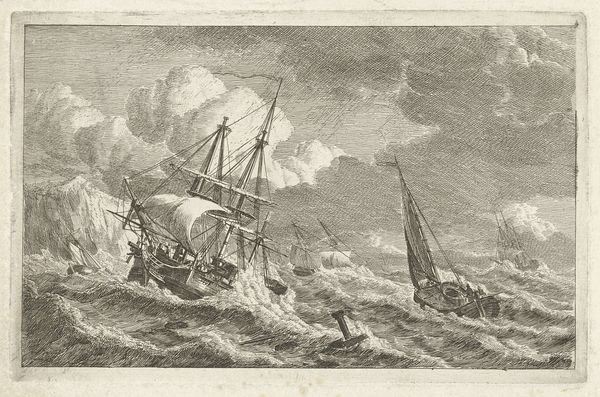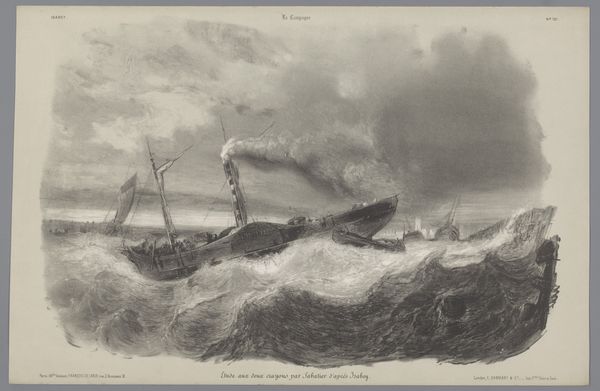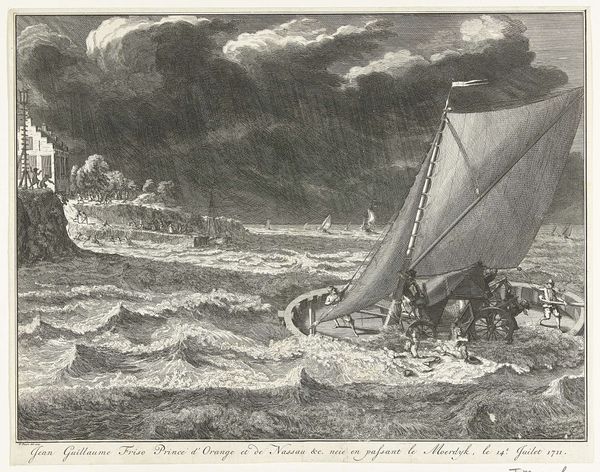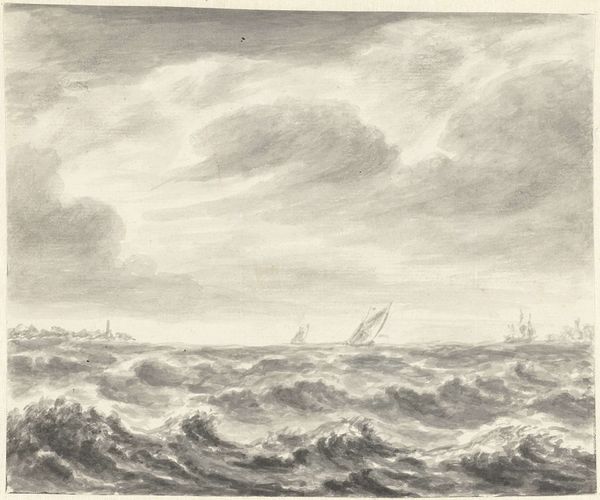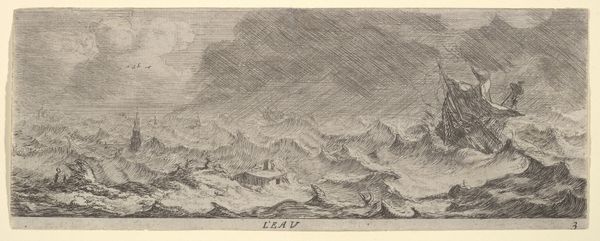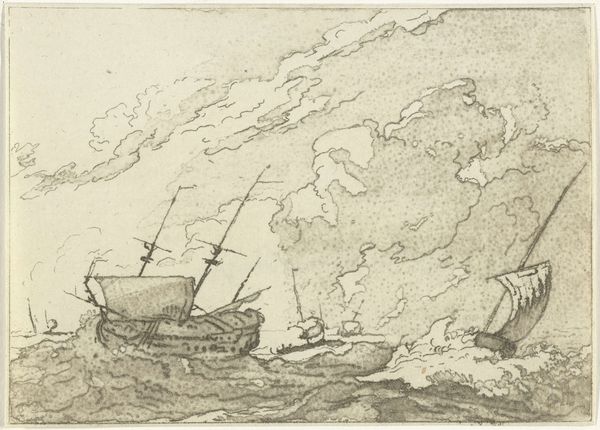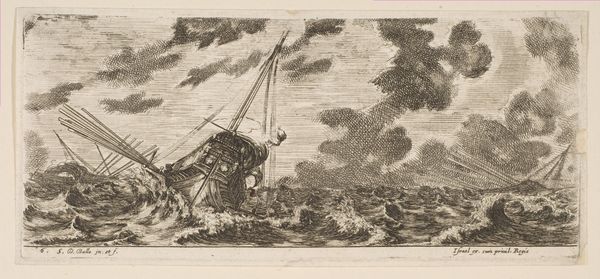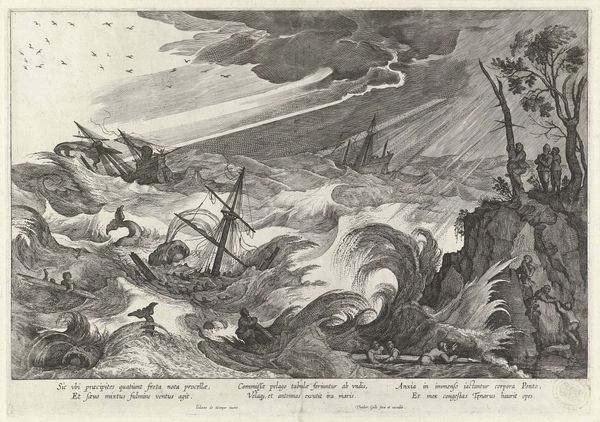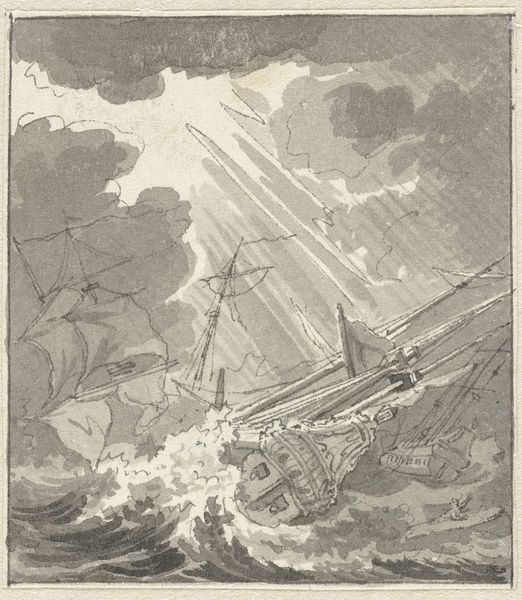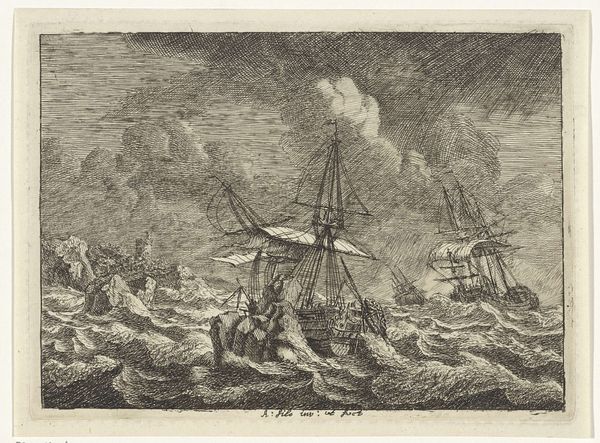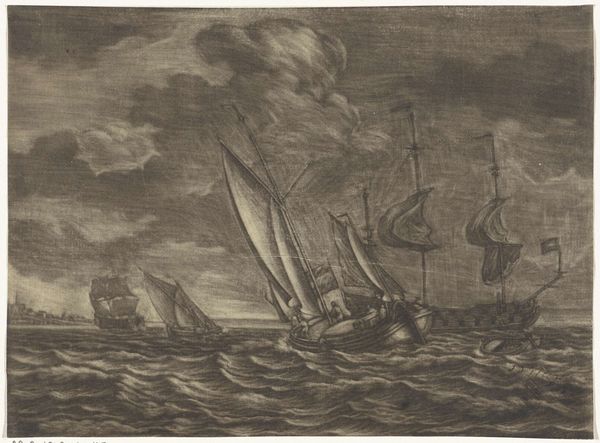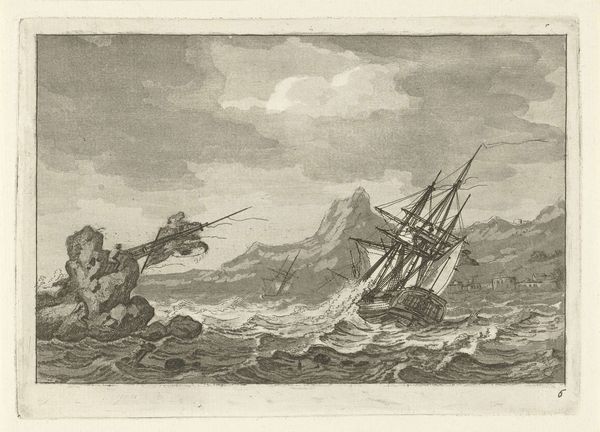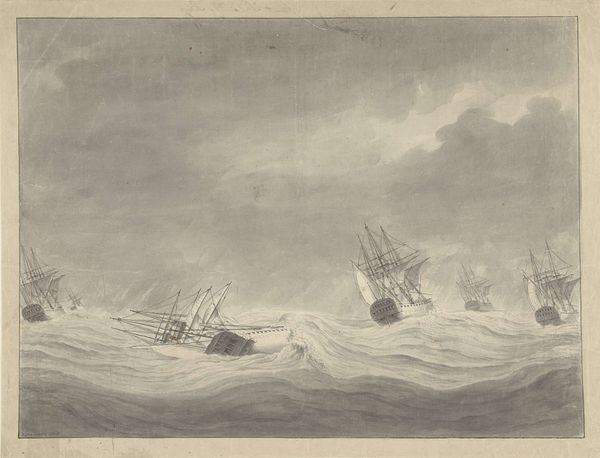
Water, a ship at sea during a storm, from 'The four elements' (Les quatre Eléments) 1645 - 1650
0:00
0:00
drawing, print, etching
#
drawing
#
baroque
# print
#
etching
#
landscape
#
figuration
#
line
#
history-painting
#
realism
Dimensions: Sheet: 3 7/16 x 7 7/8 in. (8.7 x 20 cm) Plate: 3 3/8 x 7 13/16 in. (8.5 x 19.8 cm)
Copyright: Public Domain
Curator: This etching by Stefano della Bella, titled 'Water, a ship at sea during a storm, from "The four elements,"' dates back to the mid-17th century. Editor: Wow, the sheer dynamism of that tempest grabs you right away. It’s all swirling lines, chaos rendered in miniature. Curator: Precisely! Consider the symbolic weight. Water, often a sign of cleansing and rebirth, here becomes a force of untamed power, almost biblical in its intensity. The ship, a representation of humanity, is tossed about, seemingly at the mercy of fate. Editor: It's fascinating how the material of printmaking itself plays into this. Etching, with its ability to create such fine, dense lines, allows for an incredible simulation of texture – the rough waves, the torrential rain. How long would such a detailed etching have taken to produce? And what were the economics of distributing prints like these? Curator: The act of facing an all-powerful and ultimately indifferent Nature becomes a meditation on humanity's place in the cosmos, one frequently revisited throughout baroque art and beyond. Editor: Absolutely, and I wonder how audiences at the time perceived it. Were they seeing a reflection of their own precariousness, or something more akin to disaster tourism, a thrill derived from a safe distance? The labour that went into such prints provided images that were much more portable than a massive canvas; and perhaps more available to those outside the upper classes. Curator: Perhaps both. It mirrors anxieties about earthly instability as much as it speaks to humankind's spirit. Notice how despite the peril, the ship persists, sails straining – a little symbol of defiance perhaps? The Baroque style certainly lends itself to dramatizing the fraught relationship between humans and the unknown. Editor: Ultimately, that ship—however romantic—depended on the hands that built it, on the resources it consumed. It forces one to ask questions about who would profit from this vessel when so many hands were contributing to its ultimate construction. Curator: Indeed, the narrative unfolds through layers of interpretation and speaks to an array of socio-cultural realities. The storm then takes on yet more symbolism, perhaps representative of change and uncertainty that swept the age. Editor: An intense and beautiful artifact, both as an aesthetic achievement and as a tangible representation of complex material histories.
Comments
No comments
Be the first to comment and join the conversation on the ultimate creative platform.
